Ask Ethan 101: Why was the Universe uneven?
- Transfer
In other words, if it were ideally even, would stars and galaxies appear by today?
First look at my house. He, of course, so-so, but much less so-so, than your house.
- Lumpy, Space Princess, “Adventure Time”
Imagining the Universe, you probably do not think that it is all smooth and uniform. Such a lump as the planet Earth is clearly different from the cosmic void! But on a large scale, the Universe is fairly smooth, and in earlier times it was smooth and on a smaller scale. I have already spoken about this, and this week I have chosen the following from the questions you asked:
I have a question about what you stated several times during the discussion of relic radiation. Specifically, if the universe were perfectly uniform after the big bang, the structure would not have formed. I understand the concept. But what is interesting to me, from the point of view of quantum mechanics, is it possible for the universe to be perfectly homogeneous? And if not, would it be possible to have a more uniform universe at the start, which as a result would lead to what we have now, it would just take more time?
Let's look at our present Universe.
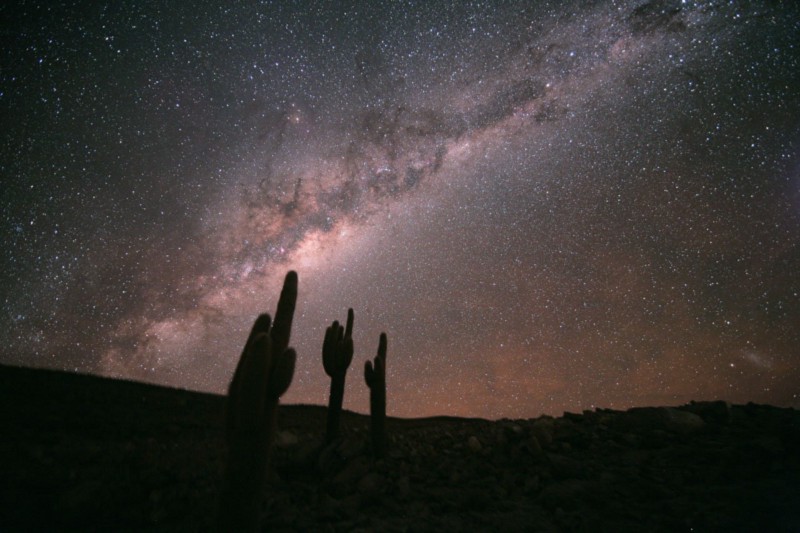
On the nearest scale we have clusters of matter: stars, planets, moons, asteroids, people. Between them are huge empty spaces inhabited by more sparse clots: interstellar gas, dust and plasma, which are either the remnants of dead and dying stars, or future places in which stars will have to appear. And all this is connected together in our great Milky Way galaxy.
On a large scale, galaxies can exist in isolation (field galaxies), can be connected together into small groups (like our local group of galaxies), or exist in large clusters of hundreds and thousands of large galaxies. Looking at even larger scales, we find that clusters and groups are located along giant threads, some of which stretch across many billions of light years of space. And between them? Giant voids, voids: rarefied areas in which there are none at all, or there are very few galaxies and stars.
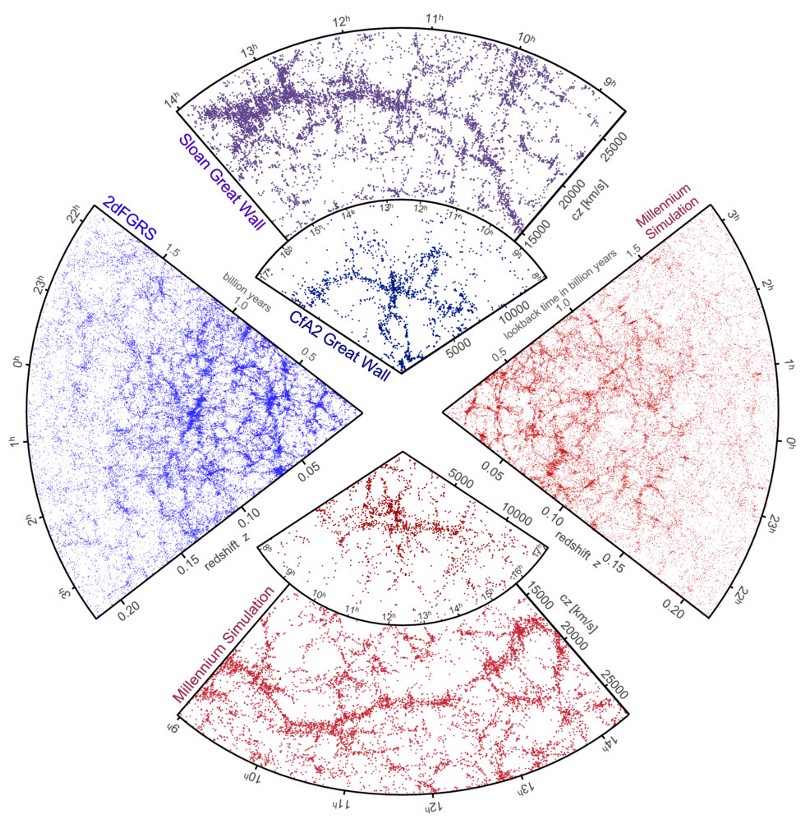
A look at even larger scales, from tens of billions of light years across, will show that any region of space looks very much like any other. The same density, the same temperature, the same number of stars and galaxies, the same types of galaxies, etc.
On the largest scales, no part of the universe looks special with respect to others. Different areas of space, apparently, have the same basic properties as all the others.

But at the beginning of our universe there were no these giant lumps and voids. If you look at the "infant photo" of the Universe - relic radiation (RI) - we find that the density of the young Universe was the same on all scales literally everywhere. And when I say “the same”, I mean that according to the measurements, the temperature in all directions was 2 K, then 2.7 K, then 2.73 K, then 2.725 K. It was in fact homogeneous everywhere.
Finally, by the 1990s, we found that some areas were only a little denser than the average, while others were slightly thinner than the average — by 80–90 microkelvin. The universe in the early days was on average very homogeneous, and deviations from this were no more than 0.003%.
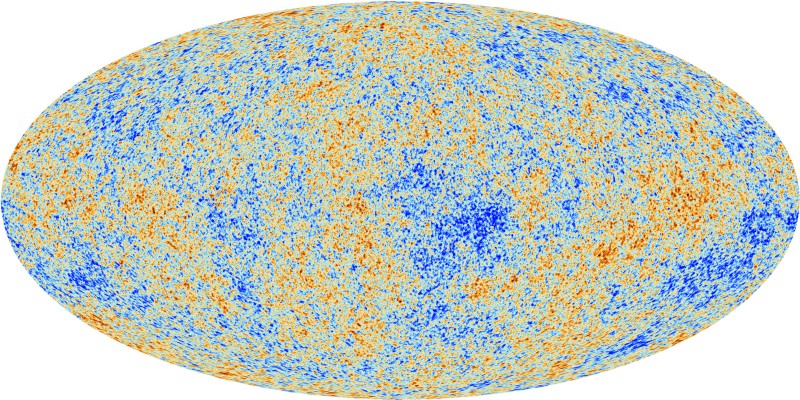
An infant photo from the Planck satellite shows deviations from perfect homogeneity, where the red “hot spots” correspond to rarefied regions, and the blue “cold” ones - to dense ones: by increasing to regions rich in stars and galaxies. The Universe needed these imperfections — these places of high and low density — in order for structures to form.
If it were perfectly uniform, no region of space could attract more matter than any other, and gravitational growth would not occur. But even if we start with very small imperfections - a few parts per 100,000 - then in 50-100 million years we will have the first stars. In a few hundred million years, the first galaxies will appear. A little more than half a billion years there will be so many stars and galaxies that visible light can travel through the universe without colliding with neutral matter blocking it. After many billions of years there will be clusters and clusters of galaxies, known to us today.
Returning with this knowledge to the question of Jim. Is it possible to create a universe without fluctuations? The answer is no, if you create it the way it was created. The visible part of the universe originated from the Big Bang, when the Universe suddenly filled with a hot and dense sea of matter, antimatter and radiation.
The energy of the hot Big Bang came from the end of inflation — then the energy inherent in space itself turned into matter and radiation — in a process known as secondary cosmic heating. The Universe did not reach the same temperature in all places, because during inflation there were quantum fluctuations stretching across the Universe! This is the root of the appearance of dense and sparse areas.
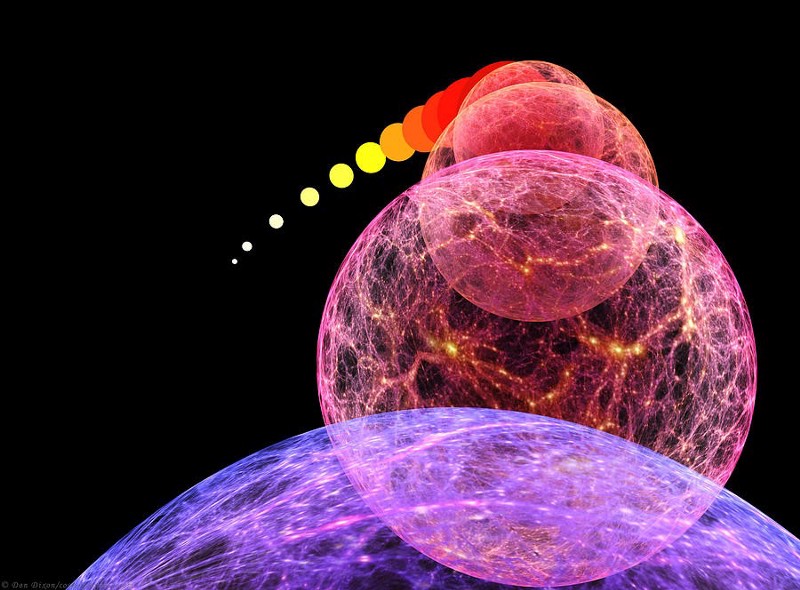
If we take the Universe rich in matter and radiation, which occurred as a result of inflation and obeys the laws of physics known to us, then we will get just such fluctuations leading to the appearance of dense and rarefied regions.
But what determines their size? Could they be less?
The answer is yes, they could. If inflation occurred at lower energies, or the inflation potential had other properties, these fluctuations could be very much smaller. Not just ten times less, but a hundred, a thousand, a million, or even a billion times less than ours!

This is extremely important because the formation of space structures takes a very long time. In our Universe, the transition from initial fluctuations to the time when we were able to measure them (RI) takes hundreds of thousands of years. To go from RI to the moment when gravity contributes to the formation of the first stars, it takes a hundred million years.
But the transition from the first stars to the Universe, in which dark energy dominates - and in which there will be no new structures, only those that are already connected by gravity - is not so big. The universe needs about 7.8 billion years from the Big Bang to the start of acceleration. So, if the initial fluctuations were much smaller, so much so that the first stars in the first ten billion years after the Big Bang would not have formed, then the combination of these small fluctuations with dark energy would definitely lead to the fact that the stars would not appear at all.
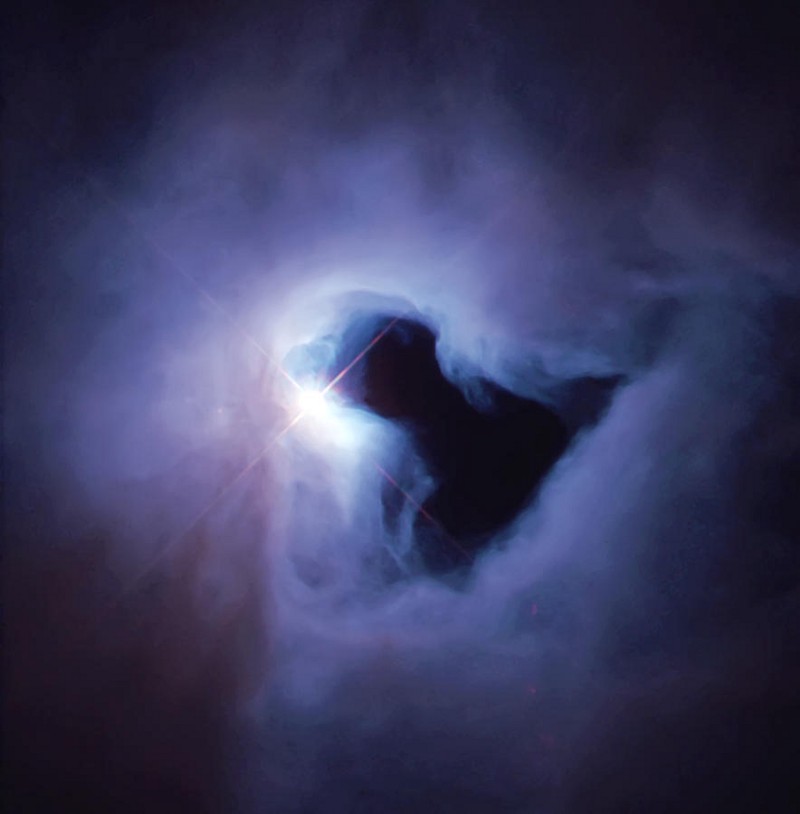
How small should such fluctuations be? The answer will surprise you - only a few hundred times smaller than ours! If the figures of these fluctuations on the graph below (RI) were in the region of tens, not several thousand, the universe would be lucky if today there were at least one star or galaxy, and it would definitely look different from ours. Universe.
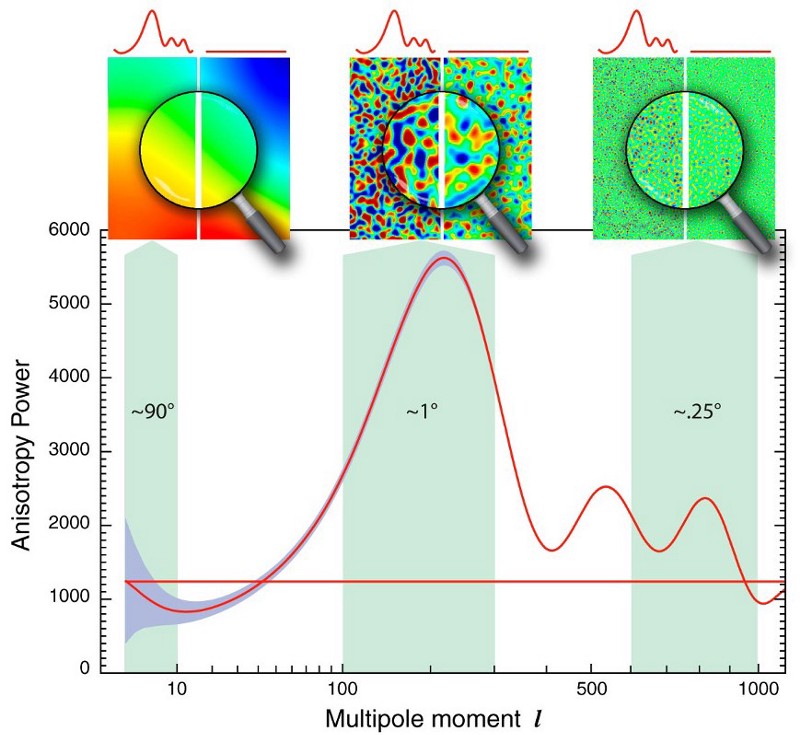
If it were not for dark energy - if we only had matter and radiation - then, with enough time, we could form structures, regardless of the size of the initial fluctuations. But the inevitability of expansion with acceleration gives some urgency, which otherwise would not exist, and makes it absolutely necessary that the magnitude of the average fluctuations be at least 0.00001% of the average density, so that any noticeable related structures exist in the universe.
Make the fluctuations smaller, and there will be nothing in the universe at all. Raise them to the "huge" level of 0.003%, and you will not have problems with creating a universe similar to ours.
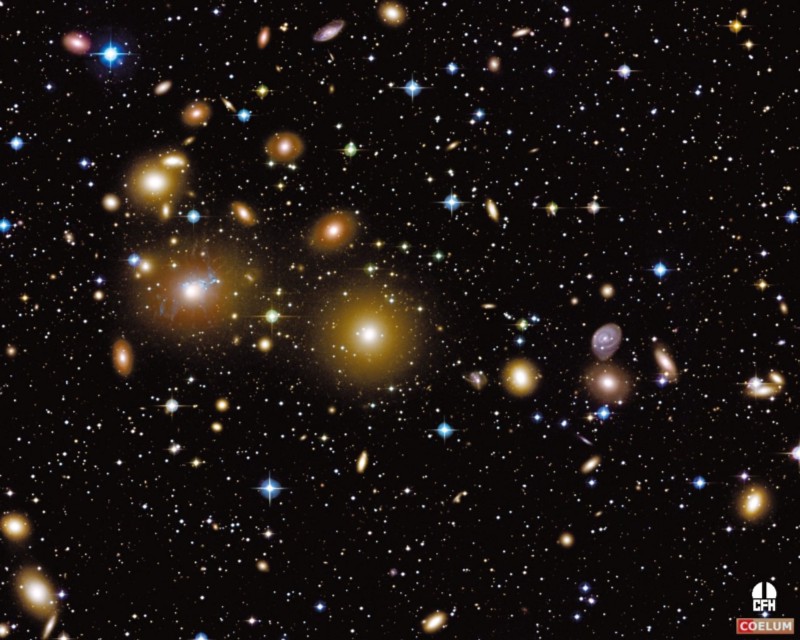
Our Universe was born with irregularities, but if inflation were different, then the masses of these lumps should have been different. Much less - and as a result, there will be no structures. Much more - and the universe would be catastrophically filled with black holes that formed very early.
To get such a universe as we have today, a very successful combination of circumstances had to happen, and fortunately, our Universe, judging by all, is just the right one.
